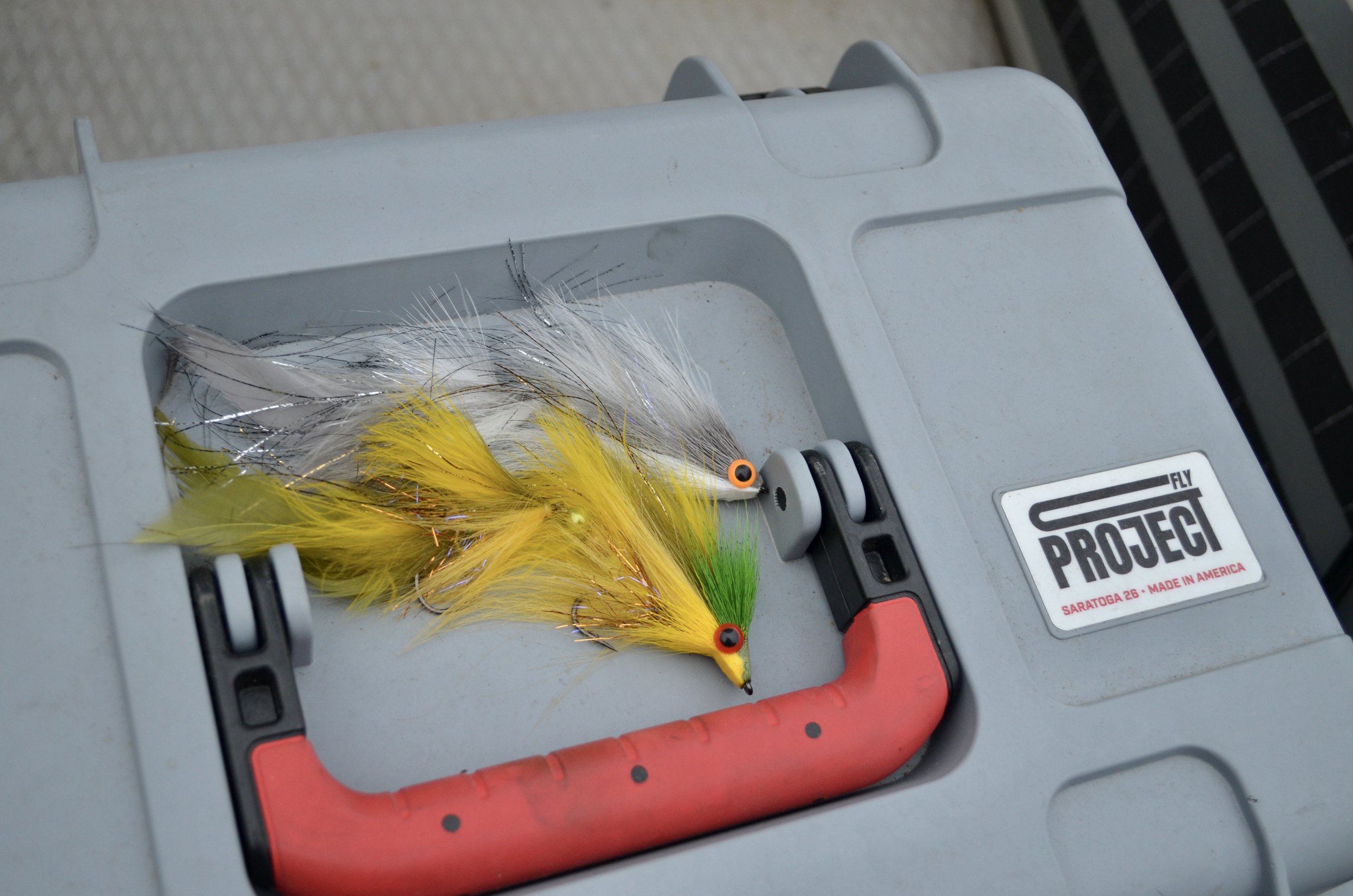How To: Tactics and Strategies to Fly Fish High Water in the Summer
It’s summertime, the weather is hot, and you’re trying to beat the heat on the water. Unfortunately, it’s been raining, the river is high, and you’re not sure where to start. High water in the summer is a great “problem” to have, because the inverse is low clear water which is tough! But don’t worry, in this article, I will break down how I like to tackle this challenge by providing tactics and strategies I’ve found to be helpful. While I will be specifically discussing high water in the summer, many of these tactics are also applicable to other times in the year.
Large flies can help fish track them in the water
The first key to fishing in high water is patience. Waiting to get on the water when it is safe is paramount. Going out when the river is roaring down the banks is not only dangerous it’s also not conducive to a good time. Furthermore, patience and allowing time to pass when the river is high allows for turbidity to die down and for the water clarity to improve. High water does not always mean dirty water and theres a big difference here.
When olive doesn’t seem to do the trick, yellow is one of my go to’s in high water
After a big rain or snowmelt, the water is often high and dirty. As time passes however, the water will lower or stabilize and water clarity will improve. Being patient and allowing for this to happen will improve your chances.
Another opportunity to practice patience, in high water, involves the speed at which you retrieve your fly. When the water is high and off color it may take time for the fish to track your offering. Give your fly more pauses, let it hover in the zone a tad longer, and just before you take it out to recast, let it hang for a half second longer. You’d be amazed at how many flies get taken out of a fishes mouth just before a recast because of a lack of patience.
Topwater takes require some patience but are well worth it!
For topwater flies, the same holds true. Between pops and twitches, let that fly sit on the water longer. Additionally, giving the fly a large pop or a loud chug can be helpful for signaling fish. But whatever you do, give it time, and be patient.
A tactic I really like to employ when fishing high water is letting the fly swing through a run and hang at the end of the swing. This is traditionally a spey fishing technique, however, it is extremely effective for smallmouth bass. The swing allows the fish to track the fly and when you let it hang, it gives them the opportunity to crush the target. Do this with topwater flies too, you’d be surprised how many takes you get doing this.
Swinging the fly as the end of a drift is very effective for smallmouth bass
When the water is high, it’s important to fish flies that stand out. Although my go to colors are typically olive’s and browns I avoid them in high water because they do not stand out well in the darker water. In these types of conditions I rely on flies that are white, cream/tan, or yellow with gold flash. Chartreuse and other loud colors work well, however, I like the more natural shades that still stand out in the water. Whatever color you do end up using, make sure that it stand outs. Thats the most important thing.
Sometimes it takes a large, flashy fly to draw the attention of fish in high water
In order to stand out in high water, don’t be afraid to throw a larger fly. Having a slightly larger fly may help the fish pick it out and target it more effectively. The best way to know what size fly to use (when it comes to streamers) is to observe the baitfish in the water. Often times, I like to fish a 2.5-3.5” streamer, but when the water is higher I will size up and go 4-6”. I think this bigger size gives the fish a more sizable meal and something worthwhile to chase. As an angler, it’s also easier for us to see and track. Don’t be afraid to size up and see what chases.
Big smiles can be had even in high water
Lastly, when fishing high water, it is important to find the right areas to fish. I gravitate toward seams in the river where fast moving water meets slow or almost stagnant water. Faster moving water brings in food sources to slow areas and I find larger fish are more eager to feed here. Additionally, because there is more water in the river, fish have more area to move about and ambush prey. If the water is really high, fish tight to the bank where baitfish get pushed or in slow eddies.
Chartreuse was the ticket on this particular day
This is also a time I like to explore and fish new areas. Typically, summertime flows are low and make fishing difficult, but with an influx of water, fish move more and can be found in different places. This is a perfect time to fish that piece of structure thats always just out of the water or hit the inside of a bank that’s covered by grasses. The best part about fishing high water in the summer is you’ll never know what you’ll get and you’ll never know unless you go!
Cheers,
Allen








